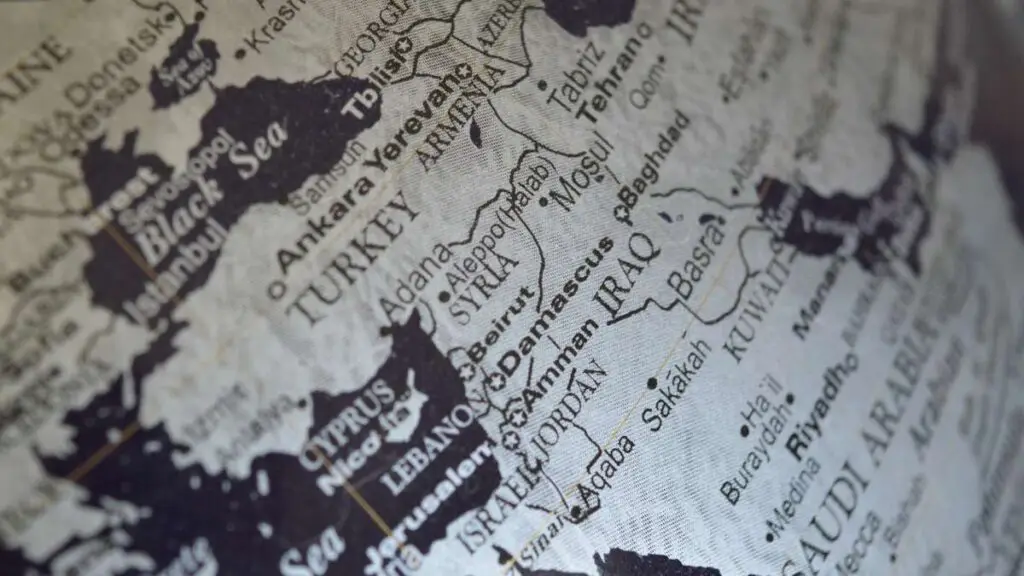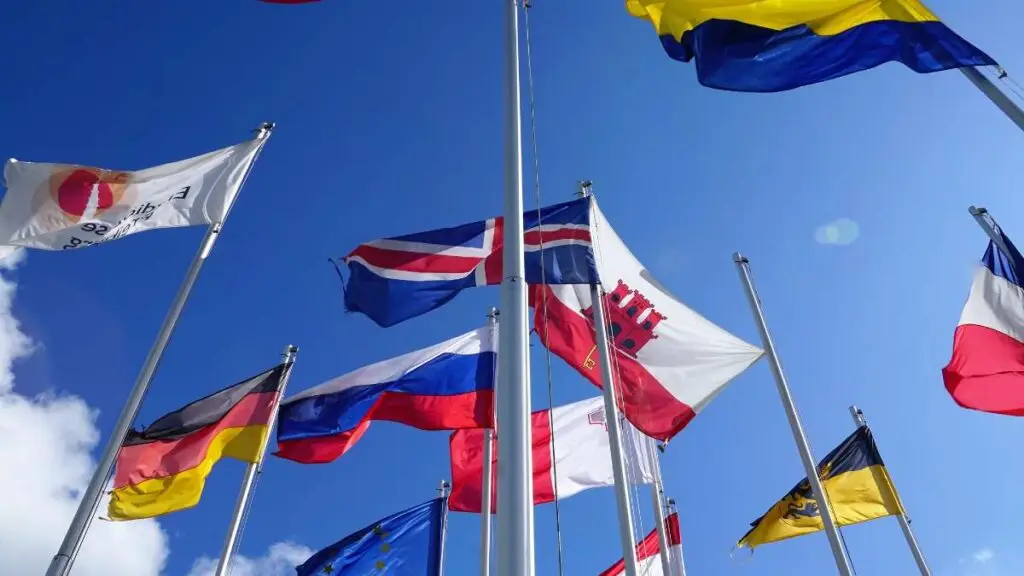By Geoffrey Cain
Washington Monthly
Jan 1, 2012
How an idealistic spy in Asia challenged the American way of war, and what his tragedy teaches us about finding allies today.
Hours after World War II officially ended on September 2, 1945, the Vietnamese nationalist leader Ho Chi Minh referenced an unlikely charter when he announced his country’s independence from the latest of its long line of imperial masters, Japan and France. “All men are created equal,” proclaimed this communist admirer of George Washington, standing before a crowd in Hanoi. “They are endowed by their Creator with certain inalienable rights. Among these are Life, Liberty and the pursuit of Happiness.”
It is now hard to imagine this, but in 1941 it was with American support that Ho led his guerrilla coalition, the Viet Minh, against the Japanese military, who had acquired control of Indochina in a power-sharing deal with Vichy France. Ho saw the United States as an ally that would help him rid his people of the French colonial rule that had degraded them for eighty years. Viet Minh soldiers also worked alongside spies from the U.S. Office of Strategic Services, the predecessor of the CIA, to rescue downed American pilots.
That same year, an OSS spy named Jim Thompson was sent to Bangkok, where he immediately saw the value of cultivating popular rebels like Ho Chi Minh. He began wooing the Viet Minh, Cambodian, and Laotian nationalist fighters—sometimes operating with the tacit approval of his superiors at OSS, but sometimes working completely off the grid. Thompson was convinced that these partisans, who saw themselves primarily as nationalists, would someday become well-placed allies in what was shaping up to be a protracted struggle for influence in Indochina between the U.S., China, and the Soviet Union. Thompson also believed that the United States could become a great force for good in the impoverished countries of Southeast Asia.
But Thompson, like Ho, had not factored in the fervid anticommunism that would grip the United States for nearly three decades after the end of World War II. The result, writes Joshua Kurlantzick, Southeast Asia fellow at the Council on Foreign Relations in The Ideal Man: The Tragedy of Jim Thompson and the American Way of War, was that the U.S. turned against those anti-colonial insurgents.
By the late 1940s, the U.S. was no longer seen as a harbinger of democracy. In 1950, Washington gave diplomatic recognition to the corrupt anticommunist fief known as the Republic of Vietnam, which had been set up a year earlier by the French government. In Thailand from the 1940s to ’60s, the U.S. backed a lineup of military dictators who, over time, turned the country into a decrepit forward base for American soldiers fighting in Indochina. And in Indonesia in 1965, the State Department threw its weight behind Suharto, a general whose underlings exterminated Southeast Asia’s largest communist party when they massacred at least 500,000 alleged leftists.
What’s more, Thompson’s outspokenness had alienated his superiors in the Truman administration, many of whom considered him something of a loose cannon. To no one’s surprise, Thompson’s OSS career didn’t last long. Four years after his resignation in 1946, the U.S. government investigated him for trafficking arms to the Vietnamese and Laotian nationalist fighters during his OSS tenure. In 1953, at the behest of J. Edgar Hoover himself, the FBI investigated him for “un-American” activities, although they never specified what those activities were. He was later cleared of the charges, but his sympathies cost him the support of fellow diplomats when he most needed political allies.
Fed up with Cold War politics, the left-leaning Thompson chose to settle down to a life of relative languor in Thailand, abandoning his failed marriage and his privileged family in Delaware. In Bangkok, he sought out high-society contacts, forging a friendship with reformist Prime Minister Pridi Banomyong. In 1948, Thompson cofounded the Thai Silk Company, an enterprise that later earned him far more celebrity than espionage ever did. Within the next decade, Thompson had revitalized the country’s dying tradition of hand-woven silk, and was bringing jobs to the country’s poor northeast.
Quickly labeled the “Silk King” by the Western press, Thompson was making fabrics that were featured in Vogue and Time, and were used to make royal Thai costumes in the classic 1951 musical The King and I. Over the next two decades, Thompson hosted regular dinners at his Bangkok home—today a museum about his life—for guests such as Truman S. Capote and Eleanor Roosevelt, showing off his well-known collection of Asian art.
Under this veneer of glamour in the 1960s, writes Kurlantzick, the retired spook felt more like a lonely prophet, without any real friendships and also weary from watching the American entanglement that he had once foreseen wrecking Southeast Asia. CIA officers in Bangkok were furious that Thompson wouldn’t help them, even though the agency considered him a subversive. As thousands of American servicemen flew in and out of Bangkok, Thompson witnessed his prelapsarian city deteriorate into a burg of prostitution and drug trafficking. Military regimes backed by the U.S. had purged many of his old Thai friends, including the democratic reformer Pridi.
Thompson was also angry that Washington had secretly turned his beloved Laos into the world’s most heavily bombed country—per capita. The U.S. dropped more than two million tons of ordnance there well into 1973. And in Vietnam, he lamented that a small-scale operation against the U.S.’s former allies had escalated into a ruinous imbroglio that would later leave 50,000 American servicemen dead. “They attacked so hard,” Colonel Tu Cang, a former commander of an elite Viet Cong spy ring, told me in Ho Chi Minh City. “But they didn’t understand that we have a big tradition of struggling against aggressors for centuries.”
In addition to the U.S. government, Thompson attracted the hostility of a second powerful clique: Thai businesspeople who were furious that a foreigner was making money using their centuries-old silk arts. By the early 1960s, his competitors (including a prime minister’s wife) began marketing cheap knockoffs, and the Thai Silk Company began losing customers. One Thai prince recalled that some in the royal family began calling Thompson a traitor, and the Silk King became paranoid that he was being followed. In a brazen political attack in 1962, the government seized some of Thompson’s cherished trove of Thai art—a collection he had spent a decade carefully gathering to help preserve the country’s heritage.
The increasingly weary and frustrated Thompson, who by then was regularly checking into hospitals with bouts of depression and the flu, felt a country he had helped and loved had once again betrayed him—a fitting prelude to his somber end. It’s a sad story for a visionary who, perhaps naively, thought he could protect his adopted country from the shameful realities of business and politics in a war-torn region. In 1967, while spending Easter Sunday in Malaysia, the depressed mogul went for a walk in the highlands and disappeared without a trace. Kurlantzick suggests that a business competitor arranged to kidnap him, while other investigators have concluded that he was mauled by a wild animal or ran away to start a new life. Thompson’s remains have never been found and the mystery never solved.
Six years after Thompson vanished, the American military bowed out of its failed campaigns in Indochina, unable to put down its fierce insurrections. Many Americans saw this debacle as a bad dream to be forgotten, pushing Southeast Asia to the fringes of U.S. foreign policy. But after almost forty years of neglect, an ascendant China, flanked by a crescent of pro- American client states, is winning over allies and natural resources across this sphere. Busy managing forays into Afghanistan and Iraq, Washington has responded sluggishly, although its diplomats are finally making inroads. Last year, they carefully orchestrated a series of cooperative military and trade deals among China’s neighbors, including a plan to station 2,500 Marines in northern Australia within five years, giving Washington the leverage to counteract Chinese expansionism throughout Southeast Asia. Soon after that, Hillary Clinton became the first secretary of state since 1955 to visit Burma, going on a factfinding mission to see whether its military regime is serious about reform.
Despite good trade ties with Vietnam, Washington still hasn’t won over the goodwill of the largely conservative and China-appeasing Communist Party, even though many regular Vietnamese hold favorable views toward American influences. One reason the government distrusts Washington is because, even today, U.S. leaders have neglected to sew up old war wounds, such as by reimbursing those suffering from the spraying of Agent Orange in central Vietnam and the Mekong Delta.
Unlike in the Cold War, our Southeast Asian alliances today are bound more by commerce than ideology, and thus the timing is good to build alliances with those countries trying to bolster their economies. If America wants to be a Pacific power to be reckoned with, it would be wise to listen to the whispers of its former foes, whether their political beliefs are popular in Washington circles or not. Thompson would doubtless have approved.
The article was originally published in Washington Monthly
See Also:





